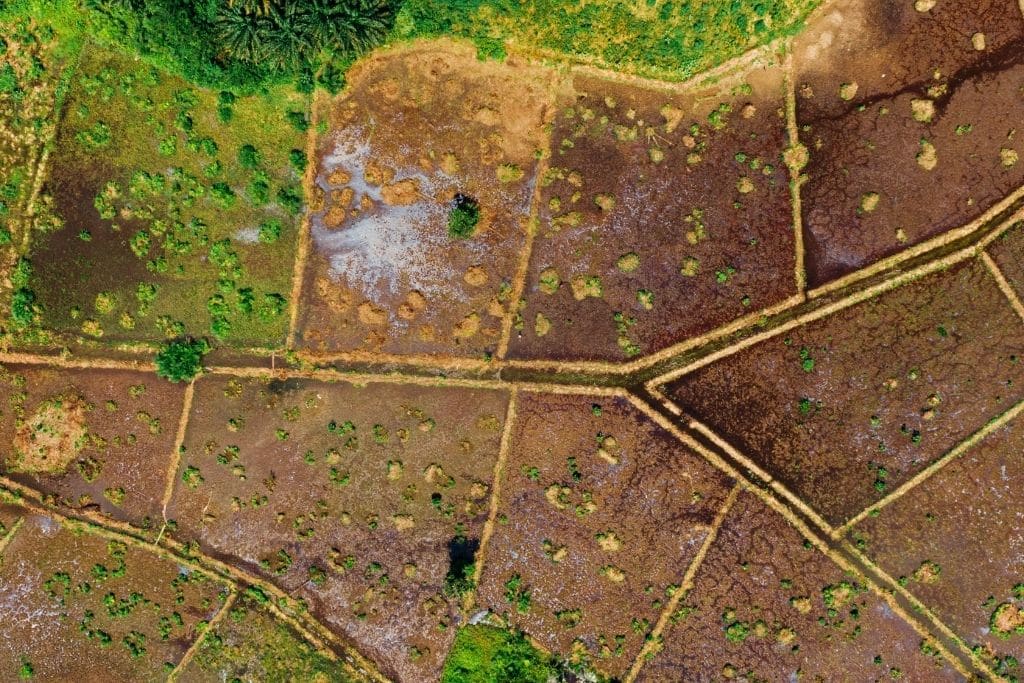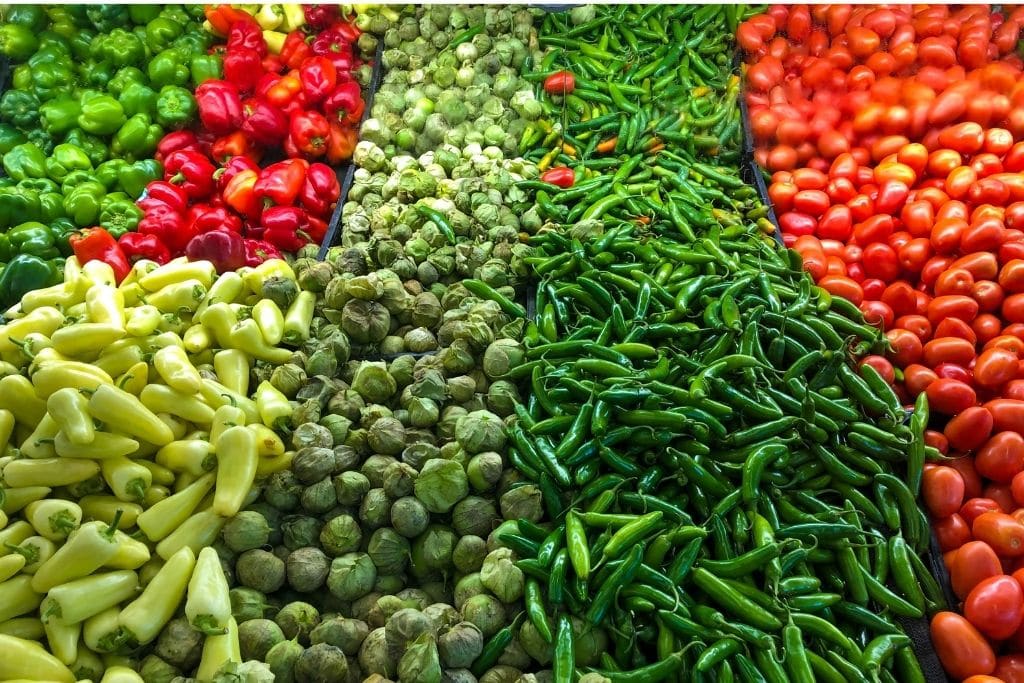In a world where people are dying from hunger, one-third of all food produced is thrown away every year. Not only does food waste exacerbate food insecurity, but it also causes severe damage to our environment. When we factor in all the different variables that go into producing the food we eat, the hidden impact it has on the environment is revealed. How does food waste affect the environment? Read on to find out.
__
Tossing away uneaten food may appear like meagre damage to the planet when compared to other issues, but the haunting reality is that it is just as harmful.
When we throw away food, we also throw away the precious resources that went into producing this food. This includes the use of land and natural resources, the social cost to the environment, and our biodiversity. Food waste accounts for one-third of all human-caused greenhouse gas emissions and generates 8% of greenhouse gases annually. With these statistics in place, there is a huge need to reduce this environmental footprint.
Preventing food waste has been highlighted in the UN Environment Programme GEO-6 report as one of three important actions that need to be taken in transforming our food system.
What Is Food Waste?
Food waste is food that is intended for human consumption that is wasted and lost, and can occur anywhere throughout the entire supply chain from farm stage to harvest to households. Although the term may be self-explanatory, two types of food waste are apparent. The first being “food loss”, which refers to the food that we lose at the early stages of its production process. The second being “food wastage”, which refers to food that is perfectly fit for human consumption, but it gets discarded for a different reason.
How Is Food Waste Produced?
The typical stages of the food production process consists of the food being grown, processed, sorted, packaged, transported, marketed, and then eventually sold. When we look at the statistics, food waste can be identified as occurring at all stages throughout its production. Therefore, every time food is wasted, all the resources used in each step of the production is also wasted, bringing the social cost up even higher.
Looking at the production process as a chain framework can help identify where the issues are. At the beginning of this chain, also known as the “upstream” stage, the food is grown, harvested, processed and sent to be sold. At later stages of the chain, also known as the “downstream” stage, food is successfully processed and sent to consumers and commerce markets but it is wasted for other reasons unrelated to whether it is fit for human consumption or not.
The later the food is wasted along the chain, the greater its environmental impact is as the further down the chain we go, the more energy and natural resources are needed in the complete production process of the food.
In 2013, the Food and Agriculture Organisation of the United Nations (FAO) released a report that analysed the impacts of global food wastage on the environment. They identified patterns in food waste on a global level.
They found that middle to higher income countries’ food waste occurs in the “downstream” phase of the production process, as they found that their food was wasted by consumers and commerce businesses. They also established that developing countries were more likely to contribute to food waste in the “upstream” phase of the production process, usually due to infrastructural challenges such as lack of refrigeration, improper storage facilities, technical constraints in harvesting techniques etc.
How Does Food Waste Affect the Environment?
1. Waste of Natural Resources
There are a number of ways in which food waste can affect the environment. When we waste food, we waste the natural resources used for producing that food, the three main ones being energy, fuel and water.
Water is needed for all stages of the food production process, as well as in all types of food produced. Agriculture accounts for 70% of the water used throughout the world. This includes the irrigation and spraying required for crops, and the water needed for rearing cattle, poultry and fish. By wasting food, we are wasting fresh water. Given that countries have a severe water shortage, with countries being predicted to be uninhabitable in a few decades, conserving freshwater should be a global mission.
Growing plants and rearing animals drains a huge volume of fresh water. Food such as fruit and vegetables are water-laden, and require a huge amount of water to grow. Additionally, different types of plants need different amounts of water to grow. Animals also require a large amount of water for both their growth and their feed. Producing meat requires more water supply, yet meat is the food that is thrown out the most.
The Natural Resources Defense Council (NRDC) established that food waste ends up wasting a quarter of our water supply in the form of uneaten food. That’s equated to USD$172billion in wasted water. They also determined that we spend over $220billion in growing, transporting and processing almost 70million tons of food that eventually ends up in landfills.
Therefore, growing food that goes to waste ends up using up to 21% of freshwater, 19% of our fertilisers, 18% of our cropland, and 21% of our landfill volume. Throwing away a kilogram of beef is equivalent to throwing away 50,000 litres of water. Pouring a glass of milk down the sink is nearly 1,000 litres of water wasted. Additionally, taking into account global food transportation, large amounts of oil, diesel and other fossil fuels are consumed as well.
You might also like: 20 Shocking Facts About Food Waste
2. Contribution to Climate Change
When food is left to rot in our landfills, it subsequently releases methane, a powerful greenhouse gas twenty-five times stronger than carbon dioxide. When methane is released, it lingers for 12 years and traps heat from the sun.
It contributes towards 20% of the global greenhouse gas emissions released. When we factor in the greenhouse gas emissions released from the use of natural resources, the contribution to climate change is astonishing. If a decent food waste treatment system were implemented, it would stop 11% of global greenhouse gas emissions.
Consultative Group on International Agricultural Research found that a third of all human-contributed greenhouse gas emissions are from food waste. If food waste were a country, its greenhouse gas emissions would be the third largest in the world, following the US and China.
If we stopped throwing food away, we can save the equivalent of 17 metric tonnes of CO2, which can be the environmental equivalent of five cars off the roads in the UK.

3. Degradation of Land
Our irresponsible use of food products has an adverse impact on the physical land itself. There are two ways in which we waste land. The land we use for producing the food, and the land we used for dumping the food.
Agriculture uses 11.5million hectares of the global land surface. There are two types of land; “arable” land (that can grow crops), and “non-arable” land (that cannot grow crops). 900 million hectares of non-arable land is used for livestock to produce meat and dairy products. As meat is in higher demand, more arable landscapes are being converted into pastures for animals to graze. By doing so, we are gradually degrading our natural land in a way that prohibits anything natural from growing on it.
These statistics show that we are over-stressing land for food production and if we are not mindful in the future, the ability to yield will diminish overtime as we gradually degrade the land. Not only are we disrupting our beautiful, natural landscapes, but we are also harming the biodiversity present in nature, as converting arable land into pastures will cause a loss of habitat for animals and could also severely disrupt food chains in the ecosystem.
4. Harm to Biodiversity
Biodiversity simply refers to the different species and organisms that make up an environment’s ecosystem.
Agriculture in general causes harm to our biodiversity. Mono-cropping and converting our wild lands into pastures and suitable agricultural terrains is a common practice where there is an increase in demand for the production of livestock.
Deforestation and conversion of our natural lands into non-arable land destroys the natural flora and fauna present, and in some cases, to the point of their extinction.
Marine life has also been recorded decreasing in population, with the large quantities of fish being caught causing the decimation of our marine ecosystems. The average annual increase in global fish consumption is reportedly outpacing population growth, yet at the same time, places like Europe are discarding 40-60% of fish because they do not meet supermarket quality standards. As the world continues to overexploit and depleting fish stocks, we are creating a severe disruption to the marine ecosystems and food chains, as well as threatening aquatic food security.
You might also like: The Remarkable Benefits of Biodiversity
What’s Next?
As with every other current issue posed against the environment, a global effort needs to be achieved in order to tackle the problem of food waste. Farmers, individual consumers, commercial businesses, governments, NGOs and the private sector all need to play their part and work together to fight this issue.
Consumer re-education has to be broadened, investment into waste treatment infrastructure needs to be made, food collection methods in line with redistribution have to be discussed, waste diversion systems need to be created for the commercial and retail sector, and further research as to the best ways to recycle and reuse the food waste that cannot be consumed have to be carried out.
Jose Graziano da Silva, director-general of the FAO gave suggestions on ways in which we could tackle this global problem. Changes need to be brought to every stage of the food production process.
More research and effort into developing food harvesting techniques, storing processes and redistribution processes are needed to be invested in. Steps need to be taken to ensure that food waste from oversupplying should be redistributed and diverted to people who need it the most.
You might also like: Solutions for Food Waste
Consumers and suppliers lower down the production chain need to take action and education. Consumers need to be encouraged to budget their meals as well as to ensure their meal plans are suitable to their eating habits. Suppliers need to loosen their restrictions on food aesthetics and think up ways in which they can sell the products that can be consumed yet would have been rejected simply due to aesthetic appeal. In 2016, France passed a law that now ensures that supermarkets can no longer throw away their unsold food. They are required to donate it to food banks instead.
Food that is unfit for human consumption needs to be recycled. It can be used for feeding livestock in the food production process, or even used as home compost in the home of consumers.
This story is funded by readers like you
Our non-profit newsroom provides climate coverage free of charge and advertising. Your one-off or monthly donations play a crucial role in supporting our operations, expanding our reach, and maintaining our editorial independence.
About EO | Mission Statement | Impact & Reach | Write for us


















